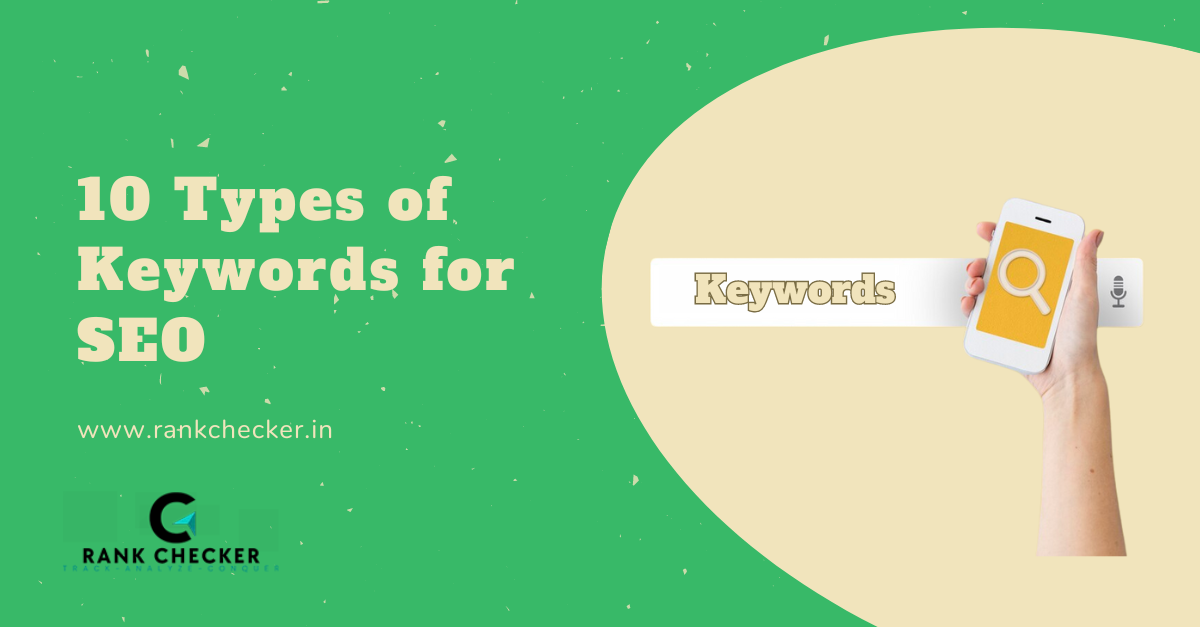10 Types of Keywords for SEO
Search Engine Optimization (SEO), understanding the different types of keywords is crucial for crafting a successful digital marketing strategy. Each keyword type serves a unique purpose and can help you target specific audiences more effectively. Here’s a comprehensive guide to the ten essential types of keywords you need to know.
1. Primary Keyword
The primary keyword is the cornerstone of your SEO strategy. It is the main term or phrase you want your content to rank for. This keyword should be relevant to your content and have a significant search volume. For instance, if you run a bakery, your primary keyword might be “artisan bread.”
Example: Artisan Bread
2. Long-Tail Keyword
Long-tail keywords are longer and more specific phrases that visitors are more likely to use when they are closer to a point of purchase or when they’re using voice search. These keywords tend to have lower search volume but higher conversion rates because they target a specific audience.
Example: Best artisan bread bakery in New York City
3. LSI Keyword (Latent Semantic Indexing)
LSI keywords are terms and phrases that are related to your primary keyword. They help search engines understand the context of your content, improving your chances of ranking. These keywords add depth to your content and can enhance its relevance.
Example: Sourdough, multigrain, whole wheat
4. Broad Match Keyword
Broad match keywords are the default match type that all your keywords are assigned. These keywords trigger ads that include misspellings, synonyms, related searches, and other relevant variations. They help capture a wide audience but may not always be the most targeted.
Example: Bakery bread
5. Phrase Match Keyword
Phrase match keywords trigger ads that include the exact phrase, or close variations of that phrase, with additional words before or after. This match type allows you to reach a more targeted audience compared to broad match keywords.
Example: “Artisan bread bakery” could trigger ads for “best artisan bread bakery” or “artisan bread bakery near me.”
6. Brand Keyword
Brand keywords include the name of your company, product, or service. They are essential for protecting your brand’s online presence and ensuring that users searching for your brand find you easily.
Example: Taction Software
7. Informational Keyword
Informational keywords are used by users looking for information. These keywords often start with question words like “how,” “what,” “where,” “why,” or “when.” Creating content around these keywords can establish your authority and drive traffic to your site.
Example: How to bake artisan bread
8. Navigational Keyword
Navigational keywords are used when a user intends to find a specific website or page. Users who use these keywords already know where they want to go. Ensuring your site ranks for these keywords can help you capture these users.
Example: Taction Software login page
9. Commercial Keyword
Commercial keywords indicate that a user is considering a purchase. These keywords are often used to compare products or find the best options available. They have a higher intent to buy and can be highly valuable for your business.
Example: Best CRM software for healthcare
10. Transactional Keyword
Transactional keywords are used by users who are ready to make a purchase. These keywords often include terms like “buy,” “discount,” or “deal.” Optimizing for these keywords can significantly increase your conversion rates.
Example: Buy artisan bread online
Here are some off-page Link-building websites for better SEO
Conclusion
Understanding and utilizing these ten types of keywords can dramatically improve your SEO strategy. By targeting the right keywords, you can attract more relevant traffic, enhance user engagement, and ultimately drive more conversions. Remember to conduct thorough keyword research and continuously refine your strategy to stay ahead in the competitive digital landscape.
By integrating these keywords effectively into your content, you can create a well-rounded and successful SEO strategy that caters to various user intents and search behaviors.

